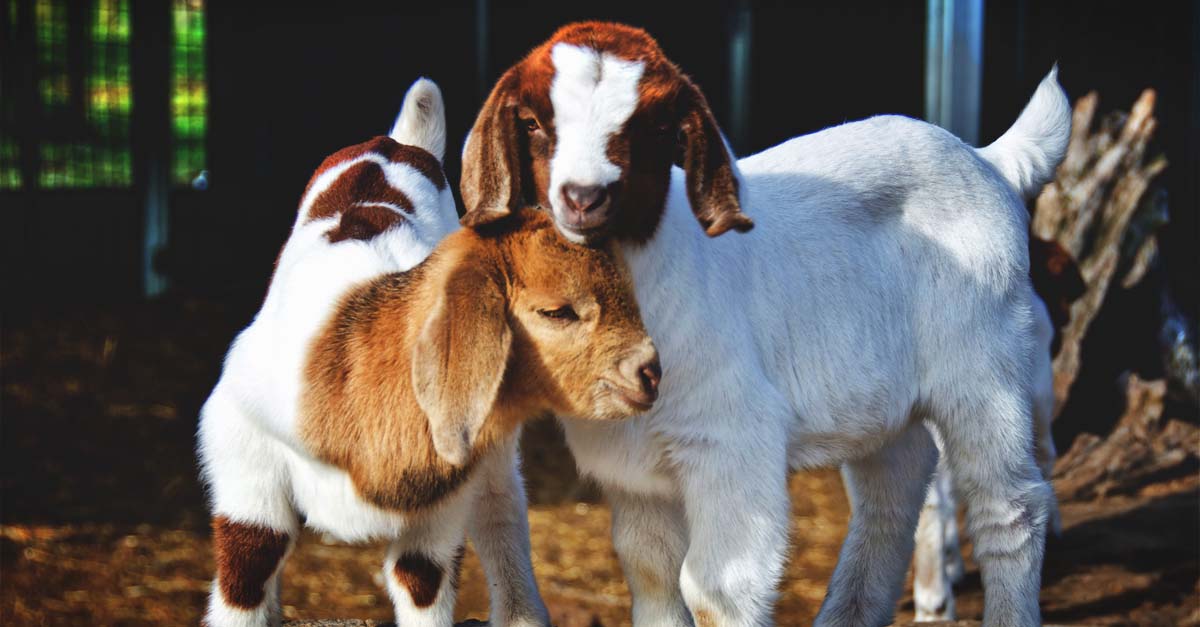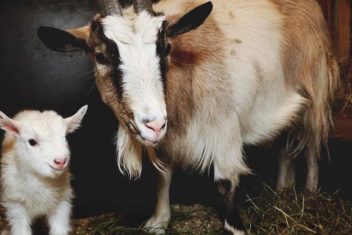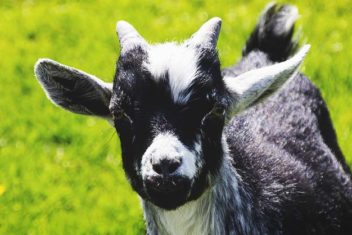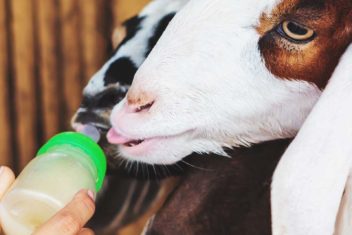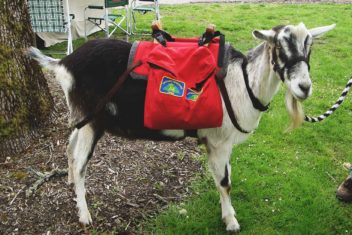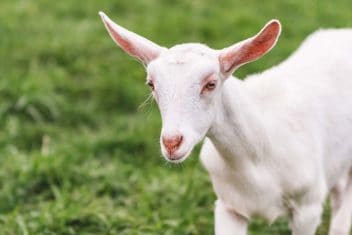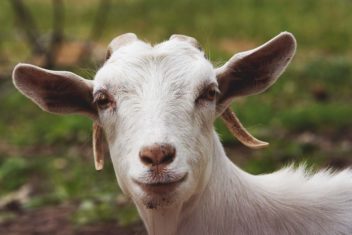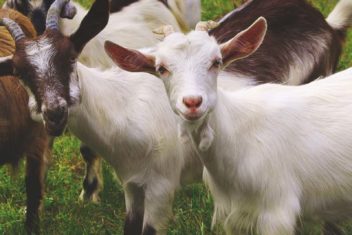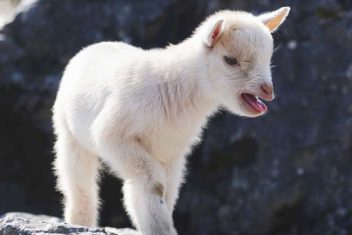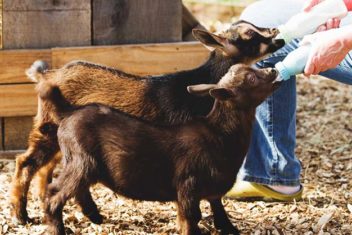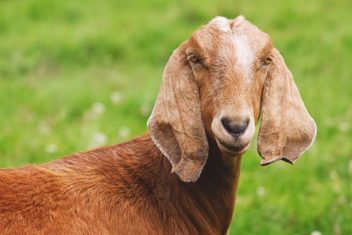There’s no sweeter sound than a newborn kid bleating for the first time. If you’ve had a successful kidding, and your doe has been attended to, you might be wondering, what’s next for the kid?
In the coming days, and weeks, you’ll watch your baby goat become stronger, more curious, and playful.
There are a few things you can do to help momma doe ensure that her kid will have a solid foundation to grow on.
So, here are a few tidbits on baby goat care to help you set the stage for a happy healthy kid.
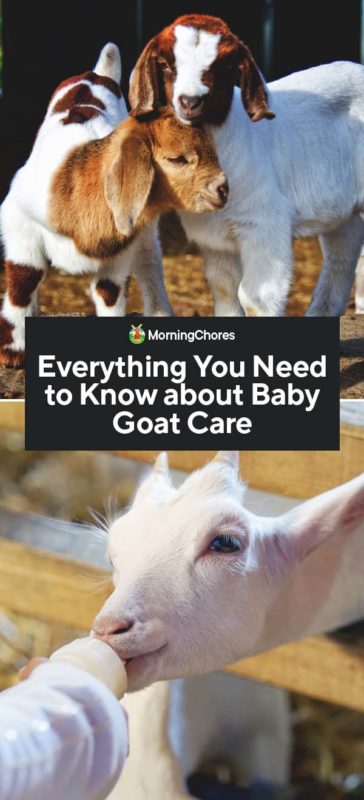
The Newborn Baby Goat
Typically, there is very little you need to worry about. Goats are usually amazing mothers and get to work caring for their kids right away.
With that being said, keep an eye out for the following things you can do to help your new babies and momma:
1. The Umbilical Cord
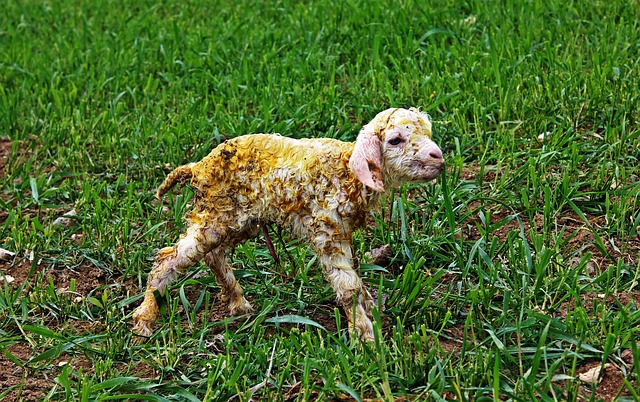
In many cases, the doe will take the time to clean her kids off on her own, but sometimes the umbilical cord is much too long and will drag in the dirt of the pen or pasture. If this is the case, trim it back a bit so it doesn’t drag in feces (be sure to leave 2 inches of the umbilical cord).
A long umbilical cord is an easy entry for bacteria on young kids. To prevent illness and infection, dip the umbilical cord in iodine to clean it and prevent infections.
2. Milk for Baby Goat Care
Occasionally, after a doe has given birth, her teets may be blocked and need to be stripped of the plugged material. For stubborn plugs, you can use a damp, warm towel to soften the plugged matter, and start the flow of milk.
Make sure that new kids get their first sip as soon as possible after birth. This is critical because the first bit of milk includes colostrum, which helps build immunity for new kids.
In most cases, babies will naturally seek out milk, so don’t panic if they haven’t latched on right away, or they are struggling to find a teat…this is all normal, and a part of the process.
Give the newborns some time, but if more than 2 hours pass and the babies haven’t been able to suckle, you may need to give them some guidance. Lead the baby to the teat and squirt some milk onto their muzzle. It shouldn’t be too long before they start enthusiastically suckling.
In some of the most unfortunate situations, due to birthing complications, new kids may be left orphaned. If this happens, you will need to try to collect colostrum from the doe, or a foster doe, and consider bottle-feeding the baby.
3. Keep The Kid Warm and Dry
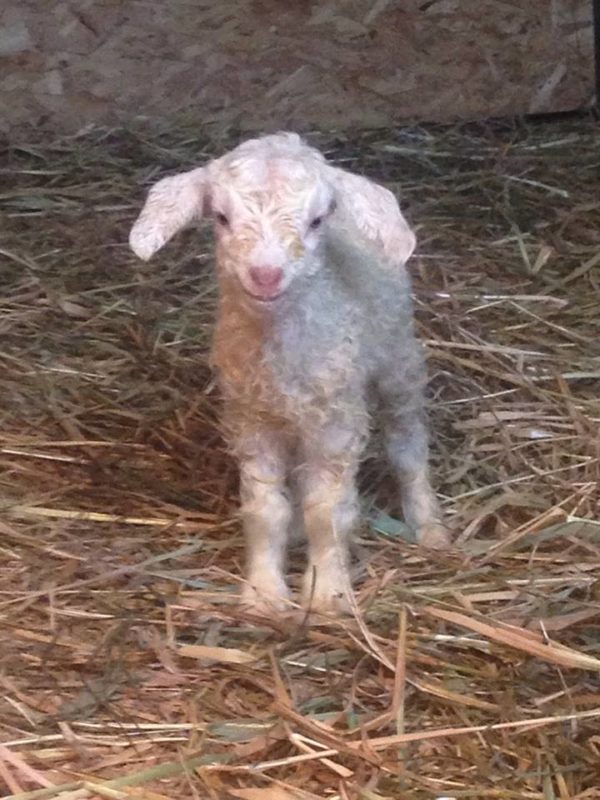
If your doe had a difficult pregnancy she may be too weak to care for babies right away. She could probably use a little assistance drying her babes.
To dry damp kids, use a soft towel, old shirts, or if you’re in a hurry, use a blow dryer. Just make sure it’s not too hot!
If you have newborn kids in the cooler months, the babies should be protected from drafts and kept warm with a heat lamp. And if you’re expecting extremely cold temperatures, you can purchase handmade kid coats for the little ones in the winter—um totes adorb!
Special Note: If you raise Angora goat kids, their fine loose fur puts them at risk for chilling and hypothermia, so check into some blankets for these adorable babes. You can even modify a Goat Tube for their small size, and have adorable little goats in pajamas breaking the internet.
Pasturing Baby Goats for the First Time
As long as the temperatures aren’t frigid, your baby goats can go outside with their does as soon as they are strong enough.
Many goat farmers actually allow kids to be born in the paddock and take a more hands-off approach to kidding season.
Before you let any kids out on pasture for the first time, there are a few things you need to take into consideration to ensure their safety.
1. Fencing Concerns for Baby Goats
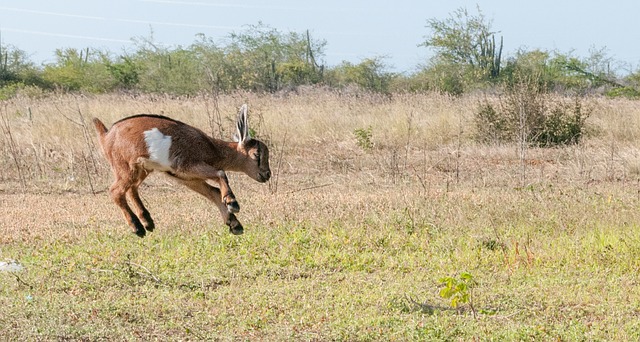
Whichever fencing you’ve opted for with your kids, you need to keep watch to ensure they respect the fence, and cannot escape or get stuck.
Babies get into a ton of trouble, and they love to crawl out and under fencing if they can. Remember, goat kids are tiny, and they can fit between spaces you never even considered!
It’s not uncommon to drive up to a goat farm and see a kid running free, separate from its family.
So, make sure your fencing, whether it’s hot wire or woven wire, is secure and fool-proof…and then check again!
2. Predators of Goats
In general, goats have a lot of predators. They are the epitome of a prey animal and the following predators are on the list to look out for:
- Coyotes
- Bears
- Eagles
- Wolves
- Dogs
- Large Wild Cats
So, when you choose your fencing, make sure you are not only keeping your goats in but also keeping predators out.
Baby goats are teeny tiny little things and even a large aerial predator can swoop down and crush a baby to death. While this is rare, it’s been known to happen a time or two.
Ensuring your herd has access to a covered shelter will also protect baby goats from large birds, not to mention cold winter winds.
3. Goat Herd Guardians
Goat farmers often opt to enlist additional support from livestock guardians.
For example, if a Livestock Guardian Dog is raised with goat kids, it will learn to protect the herd from every predator possible. They are loyal and take their job very seriously.
Other guardians, believe it or not, are llamas and donkeys. Both of these goat-buddies will defend the herd heroically and keep a watchful eye out for impending doom.
Tying Up Loose Ends

Once you are in the clear, and your babies are healthy, strong, and acting as the playful little kids they were meant to be, there are just a few more things to do as part of baby goat care:
1. Castrating
Literally, tying up loose ends is one of your last duties as a new kid owner. If you do not want to keep your buckling as breeding bucks for the future, you should consider castrating them.
2. Disbudding
Decide whether you want your goats to keep their horns or if you want them disbudded. There are pros and cons to both options, but it’s best to make this decision before they are 10 days old.
If you wait longer it can cause problems, and be quite traumatic for the youngster.
3. Vaccinating
Kids should be vaccinated against tetanus and Caprine Arthritis Encephalitis (CAE) when they are 6 weeks old.
From here on out with your baby goat care duties completed, you can enjoy your kids in their natural, happy and playful, state. Check on them from time to time to make sure everyone is happy and healthy, but for the most part, momma and the herd will take it from here.
